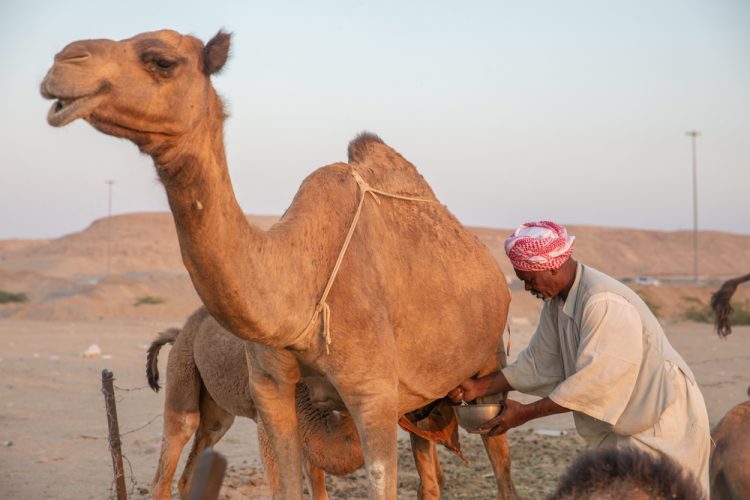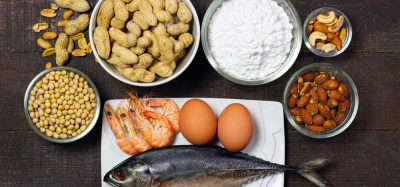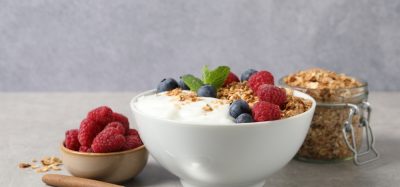Why camel milk is the ‘white gold of the desert’ for your digestive health
- Like
- Digg
- Del
- Tumblr
- VKontakte
- Buffer
- Love This
- Odnoklassniki
- Meneame
- Blogger
- Amazon
- Yahoo Mail
- Gmail
- AOL
- Newsvine
- HackerNews
- Evernote
- MySpace
- Mail.ru
- Viadeo
- Line
- Comments
- Yummly
- SMS
- Viber
- Telegram
- Subscribe
- Skype
- Facebook Messenger
- Kakao
- LiveJournal
- Yammer
- Edgar
- Fintel
- Mix
- Instapaper
- Copy Link
Posted: 23 January 2025 | Ben Cornwell | No comments yet
New research from Edith Cowan University has found that camel milk offers several health benefits compared to its bovine counterpart, potentially holding the key to healthier digestion and a happier gut.


Image Credit: Leo Morgan / Shutterstock.com
In a world teeming with milk alternatives – think almond, oat, soy and even pea – camel milk might seem like an unexpected contender. But new research from Edith Cowan University (ECU) in Australia, suggests this ancient beverage, often dubbed the “white gold of the desert,” could hold the key to healthier digestion and a happier gut.
The ECU team found that camel milk contains higher levels of naturally occurring bioactive peptides than cow’s milk. These compounds, which can selectively inhibit harmful pathogens, offer a unique potential to protect and promote gut health. For those seeking relief from dairy-related allergies or aiming to optimise their digestive wellbeing, this could make camel milk a game-changer.
“We now know that camel milk has the potential to be hypoallergenic compared to cow’s milk, but also that it has higher potential to yield bioactive peptides which can have antimicrobial properties and anti-hypertensive properties,” explained Manujaya Jayamanna Mohittige, an ECU PhD student leading the research.
The absence of the major milk allergen β-lactoglobulin (β-Lg) in camel milk provides another significant advantage for consumers. β-Lg is a common culprit in cow’s milk allergies, meaning camel milk could serve as a viable and more tolerable alternative for sensitive individuals. Additionally, its lower lactose levels may make it easier to digest for those with lactose intolerance.
Beyond its gut-friendly profile, camel milk’s bioactive peptides are believed to reduce cardiovascular disease risks, offering antimicrobial and anti-inflammatory benefits. However, Mr Mohittige was quick to note that further testing is required to fully understand the potency of these peptides.
A nutritional comparison
When compared to cow’s milk, camel milk showcases some distinct differences. It is slightly more water-rich, with a water content of 87–90 percent, compared to 85–87 percent in cow’s milk. Camel milk tends to have lower fat (1.2–4.5 percent versus 3.8–5.5 percent) and protein (2.15–4.9 percent versus 2.9–3.5 percent) levels, while its lactose content is lower at 3.5–4.5 percent, compared to 4.6 percent in cow’s milk.
These subtle variations, combined with its bioactive potential, make it particularly appealing to health-conscious consumers and those looking for alternatives to traditional dairy products.
Untapped potential in production
Globally, camel milk remains a niche product, accounting for just 0.4 percent of total milk production, behind cow, buffalo, goat and sheep milk. However, it is gaining traction in regions such as Sub-Saharan Africa, where camels contribute about eight percent of total milk production. The market’s growth potential is substantial: Grand View Research estimates that the global camel milk products market was worth $14.3 billion in 2024. With a compound annual growth rate (CAGR) of 9.4 percent, the market is projected to reach $24 billion by 2030.
Australia is uniquely positioned to capitalise on this trend. Its semi-arid climate and existing camel population – albeit largely feral – create an ideal environment for camel farming. “Camel milk is gaining global attention, in part because of environmental conditions. Arid or semi-arid areas can be challenging for traditional cattle farming, but perfect for camels,” noted Mr Mohittige.
While a handful of camel dairies already exist in Australia, production volumes remain modest. A single camel produces about five litres of milk per day, compared to the 28 litres typically yielded by a dairy cow. Despite this limitation, the milk’s unique properties and sustainability appeal make it an increasingly attractive option for food producers and consumers alike.
With growing interest in gut health and sustainable agriculture, camel milk could soon move from niche to mainstream, offering the food industry a truly unique alternative to traditional dairy.
Related topics
Health & Nutrition, The consumer, Trade & Economy, World Food









